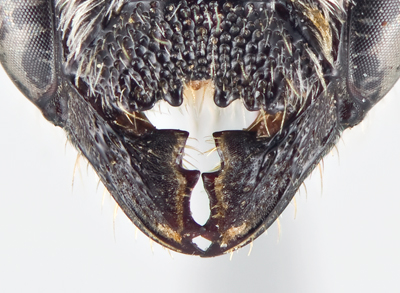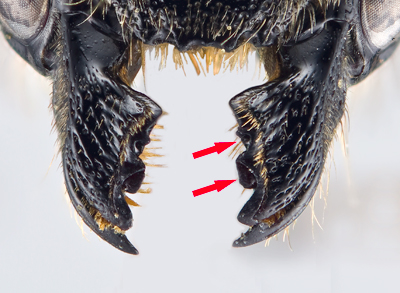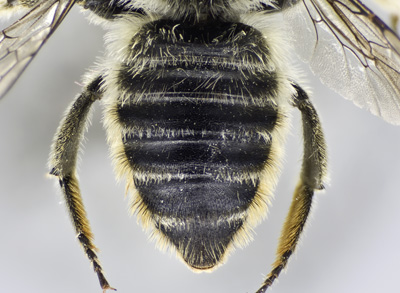2. a) Mandibles without bevelled cutting edges (Figure 3a); metasoma cylindrical and parallel sided for most of its length, usually at least twice as long as wide (Figure 4a) [if metasoma not distinctly parallel sided, then clypeus with small median tubercle on apical edge (see Figure 7a)] ..... 3 b) Mandibles with a complete or partial bevelled cutting edge in the emargination between at least two teeth (Figure 3b) (excluding M. montivaga, which has no cutting edges but which has a metasoma that is distinctly tapering towards apex); metasoma somewhat flattened dorsoventrally, widest at terga 2 and 3 and tapering towards apex (Figure 4b) [excluding members of the subgenus Sayapis, which have distinct cutting edges on mandibles] ..... 6 |
|
 |
 |
Figure 3a: Mandibles without bevelled cutting edges |
Figure 3b: Mandibles with bevelled cutting edges |
 |
 |
Figure 4a: metasoma cylindrical and parallel sided |
Figure 4b: metasoma somewhat flattened dorsoventrally |

